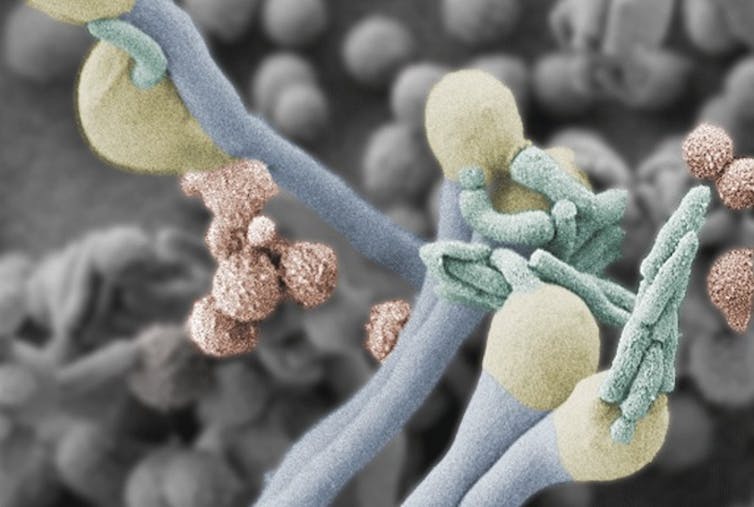A deadly fungal infection has been spreading across western North America. The number of human and animal cases has grown rapidly in recent years, to the extent that government agencies in US and Canada have labelled the infection an outbreak.
The infection, cryptococcosis, affects the lungs first, because it is acquired by inhaling fungal spores. In the absence of therapy and sometimes despite it, the infection quickly spreads to the brain and other organs, with often fatal consequences. During this outbreak in the US, about a third of those who catch the disease succumb to it. Those infected with the disease have to undergo antifungal drug therapy that can last months. But those drugs often fail to curtail the disease, forcing many to opt for surgery.
Cryptococcosis is caused by two types of fungi: Cryptococcus neoformans (C. neoformans) and Cryptococcus gattii (C. gattii). Cn selectively infects those with HIV, because of their weak immune system. C. gattii is more powerful, causing disease in healthy people with more severe symptoms. (Of course it cannot be ruled out that these apparently healthy people might have some subtle defects in their immunity.)

Charting the spread
It began in 1999 when hospitals in Vancouver Island, Canada saw a sudden spike in cryptococcosis cases, particularly in apparently healthy people. By 2000, veterinary hospitals were handling lots of animals ill with the disease.
It was not until 2002, though, that C. gattii - the more potent species of fungus - was nailed down as the culprit. By that time, many cases were emerging among those who had not even visited Vancouver Island. This meant the fungal infection was spreading.
C. gattii had been known to exist in the tropical and sub-tropical regions of the world. In those areas, out of every million residents, on average about six caught the disease. The toll in Vancouver Island was much higher, at about 27 per million.
By 2007, British Columbia’s Centre for Disease Control had more than 200 human cases. What was most worrying, though, was that those affected did not have weak immune systems.
About the same time, the infection had started spreading south of the Canadian border into the US. A 2010 report by the US Centre for Disease Control and Prevention found 60 human cases and about the same number of animal cases in the states of Washington, Oregon, California Idaho and Hawaii. Fungal disease caused by C. gattii in domestic pets and other animals (alpacas, goats, horses and porpoises) have indicated that humans are at risk in those areas.
In Canada only about one in ten of people who contracted the disease died, compared to one in three in the US. But recent analysis shows genetic variants of C. gattii in the US are identical to those found in Canada in many cases. This makes the difference in the death toll caused by C. gattii in these countries puzzling.
Global warming to blame?
Researchers are also puzzled that fungus usually found in warmer places, was being detected so far north. The cool, dry temperate weather of North America should not be a favourable place for such a fungus. In a recent case, a Florida man who hadn’t left the state in 20 years was found to have contracted this fungal disease.
According to our predictions based on ecological models, there is a chance that global warming is to blame. Long-term changes in the climate could have created pockets of warm temperature and allowed the fungus to grow and spread.

Ignore no more
Among communicable diseases, fungal infections usually develop over a long time and often reappear after treatment. In contrast, bacterial infections are more rapid and often acute. So bacterial infections like common stomach bugs get more attention. But in recent decades, clinical research has shown that fungal infections can often be equally devastating.
Increased awareness at both local and regional level in the US has brought about changes in policy. In diagnosis these days, the possibility of a fungal infection is now actively considered. Government agencies in charge of public health are also armed with tools that can track the progress of fungal disease.
Of the areas that require urgent work to bring this fungal infection under control, two are more important. First is routine genetic analysis of the fungus recovered from those diagnosed with C. gattii infections. Second are more evidence-based changes in the existing treatment guidelines.
Researchers are working to find better drugs as well as preventive vaccines for this disease. Public awareness helps in early detection, which can save the most lives. The fact that this disease is so unheard of is its most fatal characteristic.

